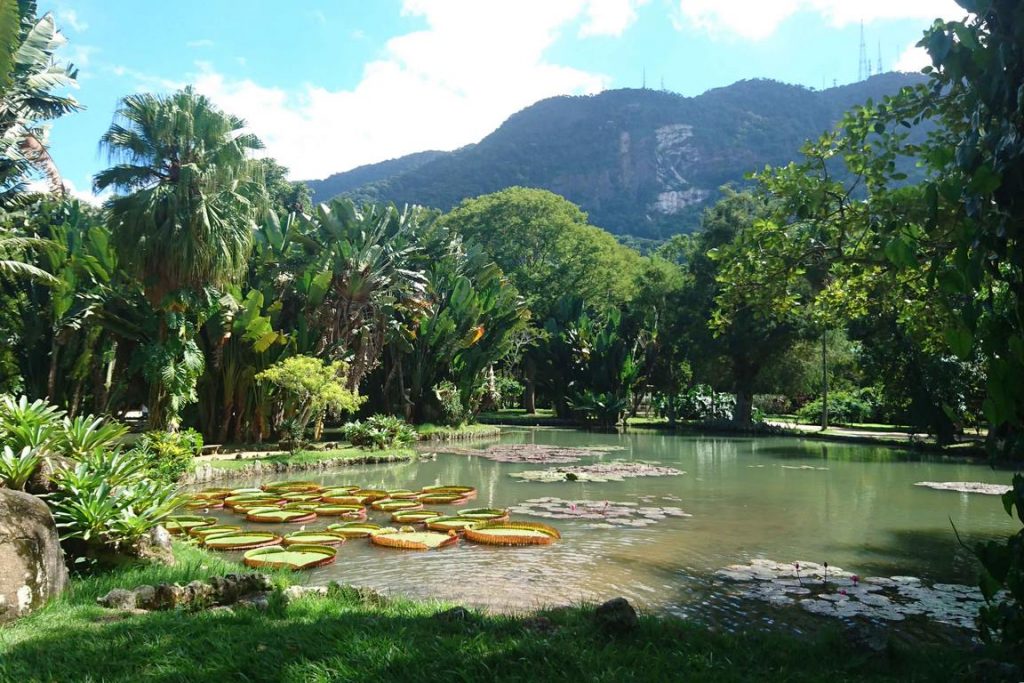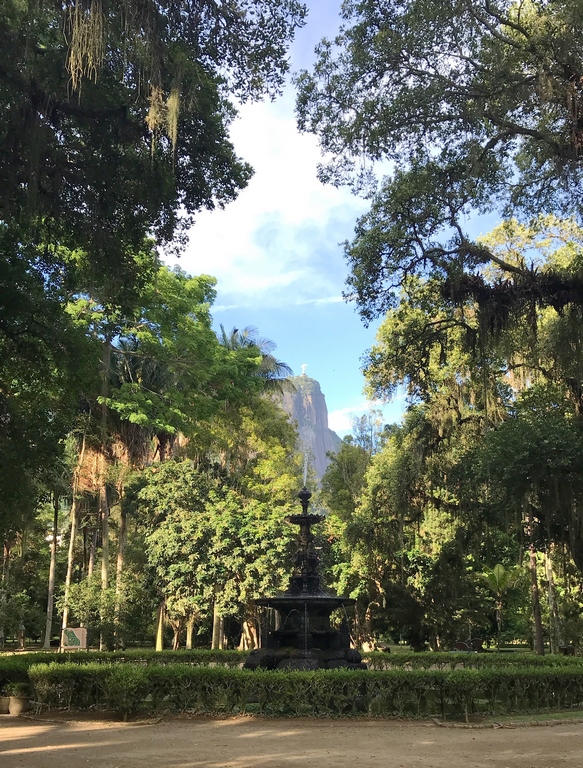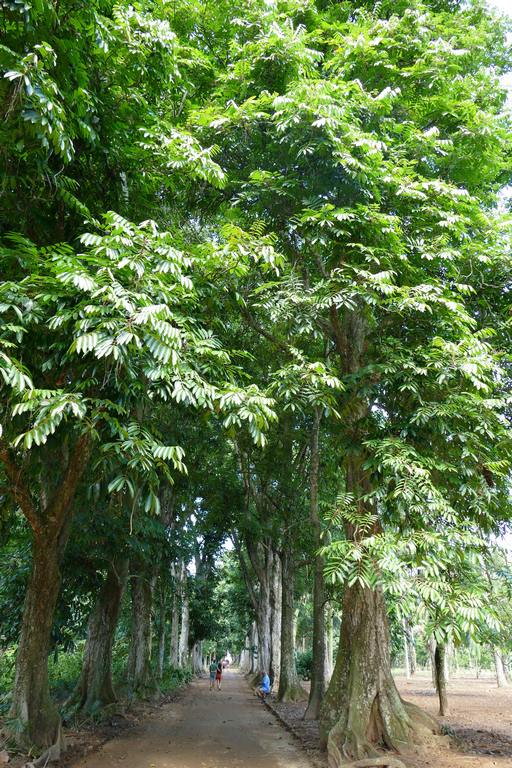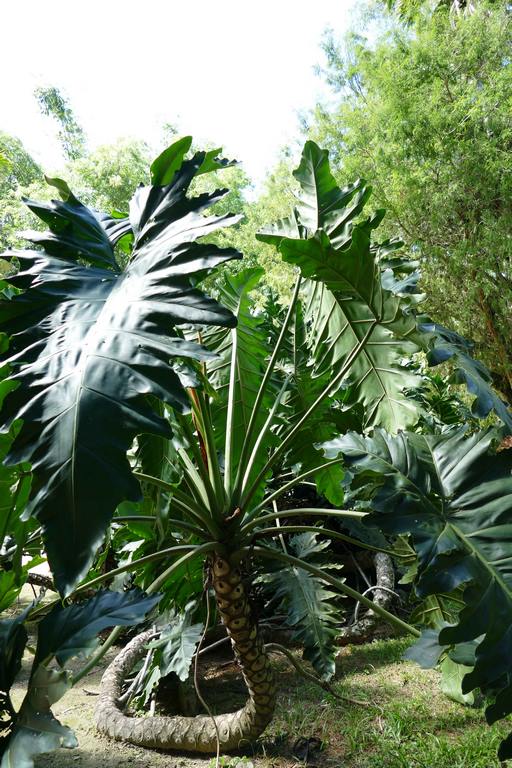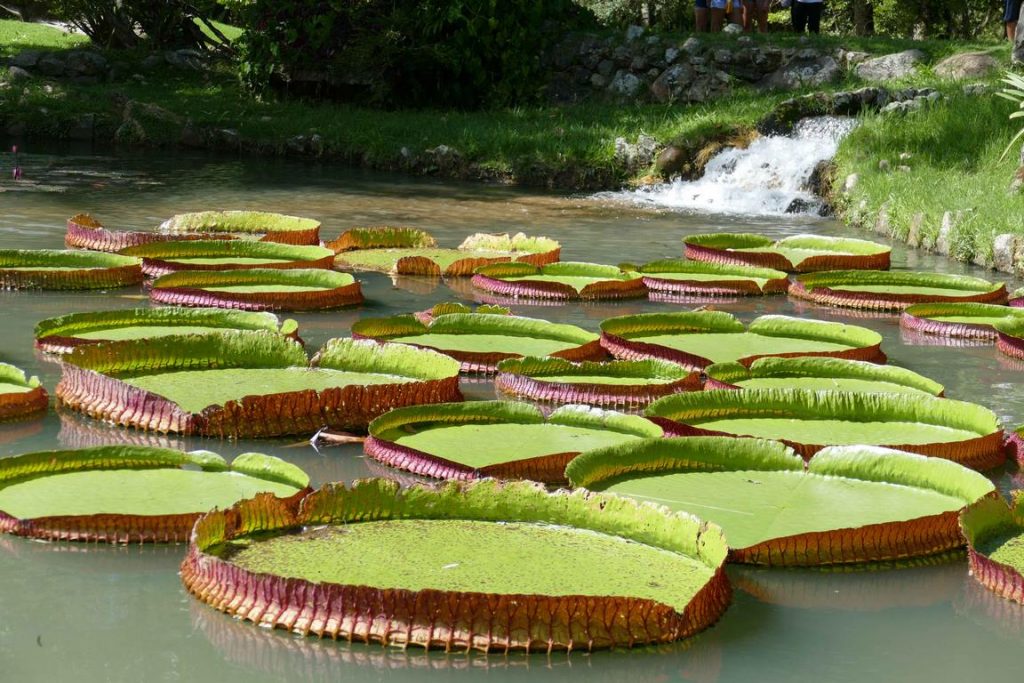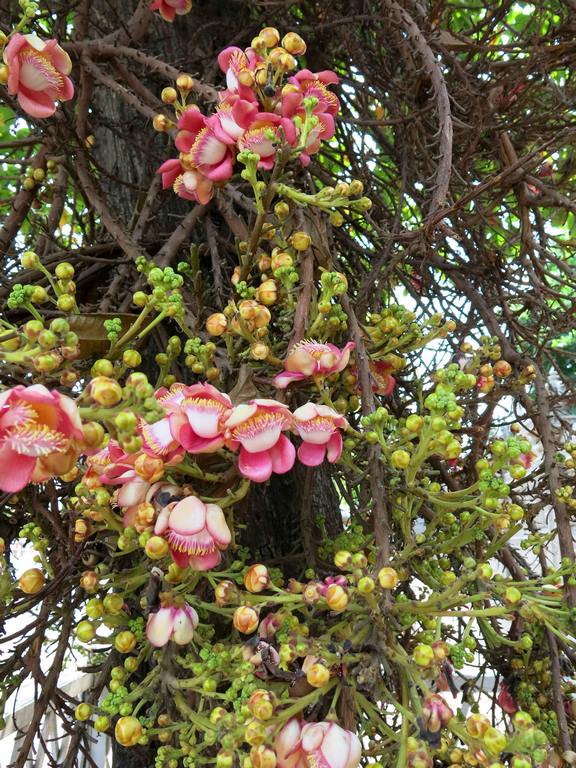
A green oasis in the heart of Rio de Janeiro, the Botanical Gardens are a UNESCO World Heritage Biosphere Reserve, home to part of the Atlantic Forest. A haven from the hustle and bustle of Rio de Janeiro and the scorching sun that plagues the city.
The Botanical Garden of Rio de Janeiro - Jardim Botânico in Portuguese - was created in 1808. It was one of the first initiatives of the Prince Regent of Portugal, Dom João VI. Driven out of Lisbon by Napoleon?s troops, he decided to transfer his capital to his distant colony in Brazil. The royal family and the court transformed the small town of Rio into a capital worthy of the name. Mansions and palaces were built, and the sovereign created a garden to acclimatise plant species from other continents, including spices such as nutmeg, pepper and cinnamon. In 1822, his successor, Emperor Dom Pedro I, decided to open the garden to the public. Since then, the garden has grown to become a conservatory and one of the most important research centres in the world in the fields of botany and biodiversity conservation. In 1992, UNESCO designated it as a Biosphere Reserve. And in 1999, it became part of the Mata Atlântica Biosphere Reserve.
A botanical world tour
The cultivated area covers some 140 hectares and, apart from greenhouses housing delicate orchids, bromeliads and carnivorous plants, is home to some 9,000 botanical specimens belonging to around 1,500 species. 40 % of the park is landscaped, the rest is part of the Tijuca Forest, which leads to the slopes of Mount Corcovado where the statue of Christ the Redeemer watches over the city.
Roystonea oleracea
When you enter this garden, you are surprised by how little of the city?s noise can be heard, and by the atmosphere of serenity and peace that pervades. The only sounds to be heard are birdsong and the cries of the capuchin monks.
We enter a long avenue flanked by 134 palm trees: the imperial palms (Roystonea oleracea(Arecaceae family), whose palms grow to a height of around forty metres.
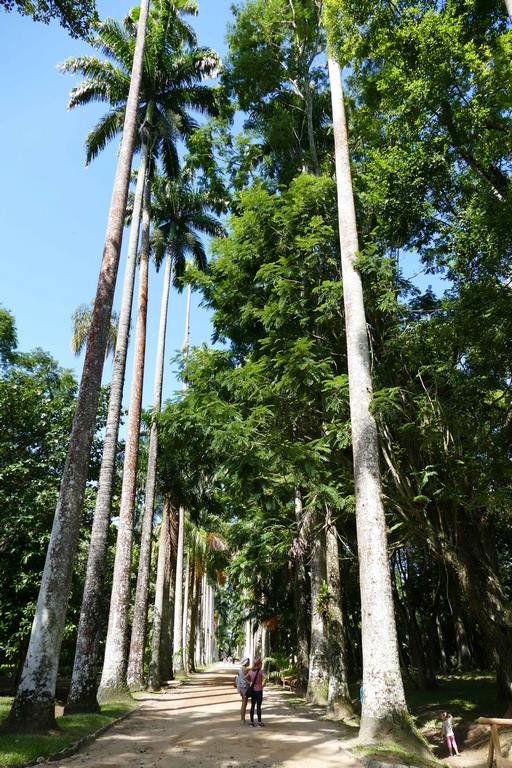
The garden?s curators thought that the first plants had been brought from the Jardin Gabrielle in French Guiana during the Portuguese occupation (1809 ? 1817), in retaliation for the invasion of the Kingdom of Portugal by Napoleon?s French army. In fact, we now know that they were brought back by Luiz de Abreu Vieira e Silva from the Pamplemousse Garden in Mauritius and offered to the Prince Regent, who planted the first specimen in 1809. Known as the Imperial Palm, it spread throughout the country thanks to slaves who, in violation of the orders of the director at the time, pilfered its seeds at night and sold them for 100 reis each. The two oldest alleys - Cândido Baptista Alley and Barbosa Rodrigues Alley - are made up of specimens of this palm tree, which has become the symbol of Rio de Janeiro?s Botanical Gardens.
Two streams, the riacho Iglesias and the riacho dos Macacos, flow through the garden from the Tijuca forest, the largest urban forest in the world (4,200 hectares). Popular with walkers, these little streams are a refreshing stop-off for people who come to read or meditate on the banks. And a popular watering hole for the green parrots and toucans that nest in the foliage.
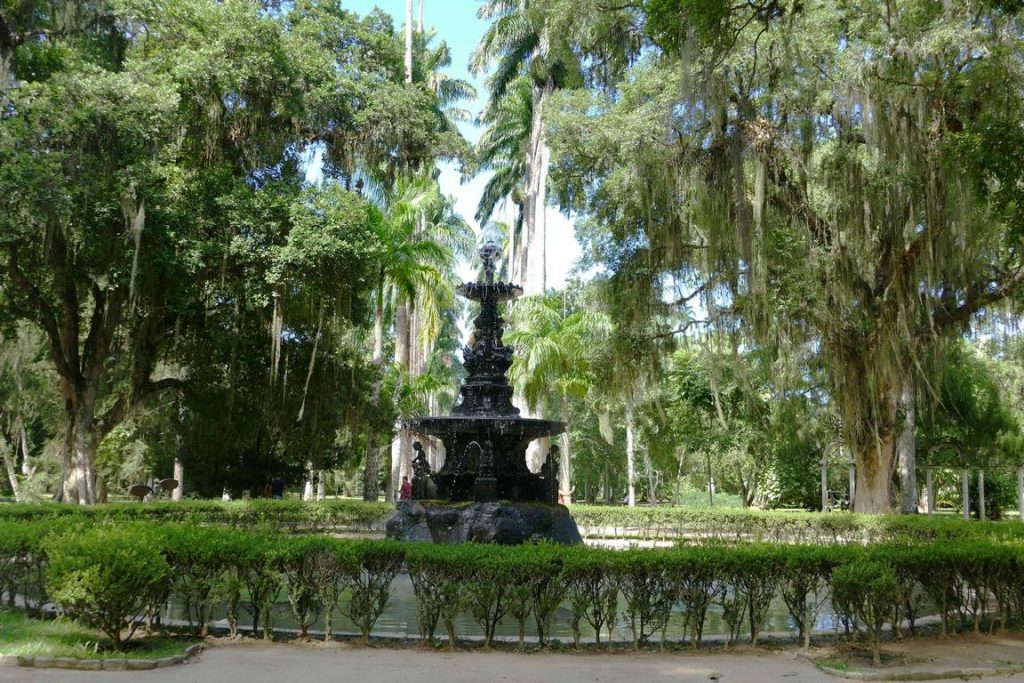
Hura crepitans
We discover the açacu (Hura crepitansfamily Euphorbiaceae), also known as Devil's Pet in French Guiana or West Indian Hourglass. It is found throughout the Amazon region. It has a trunk 50 to 100 cm in diameter, against which it is not advisable to lean, and can reach 40 m in height. Its latex is highly toxic and feared by lumberjacks, who prefer to bleed the tree before felling it. Its fruit resembles a small squash and is unique in that it explodes when ripe, hence one of the Anglo-Saxon names for "squash". Dynamite tree" sometimes attributed to this tree, and the Latin qualifier "crepitans". Its wood is used in construction, matchmaking and landscaping. It flowers from October to January.
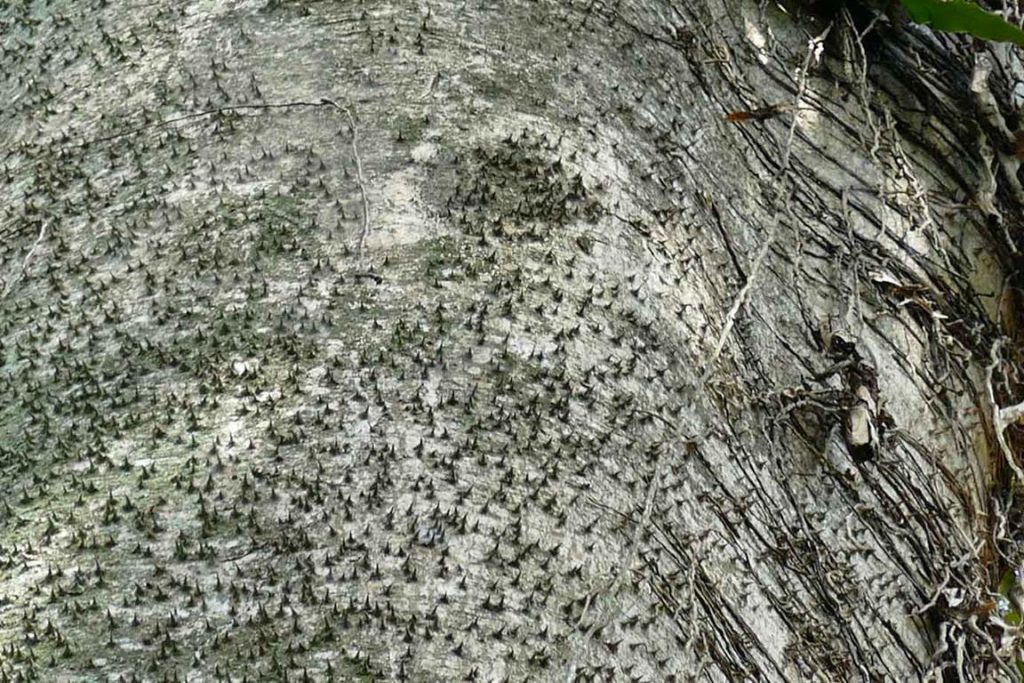
Carapa guianensis
As we continue our walk through the park, we come across an avenue of andiroba (Carapa guianensisfamily Meliceae).
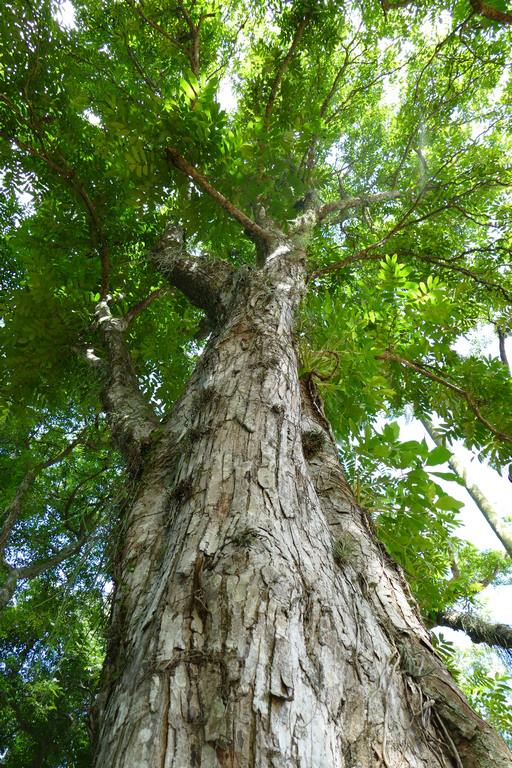
Andiroba wood has a high economic value because it is hard but easy to work. It is used to make ship parts and joinery. The tree produces large nuts containing several seeds from which an oil is extracted that is widely used in Amazonian pharmacopoeia. Andiroba oil has anti-inflammatory, antiseptic, healing and soothing properties for the skin. The use of bagasse seeds in the manufacture of insect repellent candles has been developed in the laboratories of the Oswaldo Cruz Foundation in Brazil. They are effective in repelling mosquitoes, particularly Aedes aegyptiwhich transmits dengue fever and yellow fever.
Bambusa multiplex
We take a break in the shade of the bamboo (Bambusa multiplex), which also grows in China, India, Vietnam and the West Indies. Very ornamental, the canes can reach up to 9 m in height. They are also used to build boats and fishing rods.
Ravenala madagascariensis
You can then take advantage of this moment of tranquillity to admire the ravinalas of Madagascar (Ravenala madagascariensisfamily Strelitziaceae) sway in the breeze. Endemic to the island of Madagascar, this plant, commonly known as the "traveller's tree", is not a tree in the botanical sense of the term, but a herbaceous plant growing on a stipe over 10 metres high, which makes it resemble a palm tree. This tree owes its name to its propensity to store water at the base of its leaves, enabling it to quench the thirst of thirsty travellers.
Philodendron undulatum
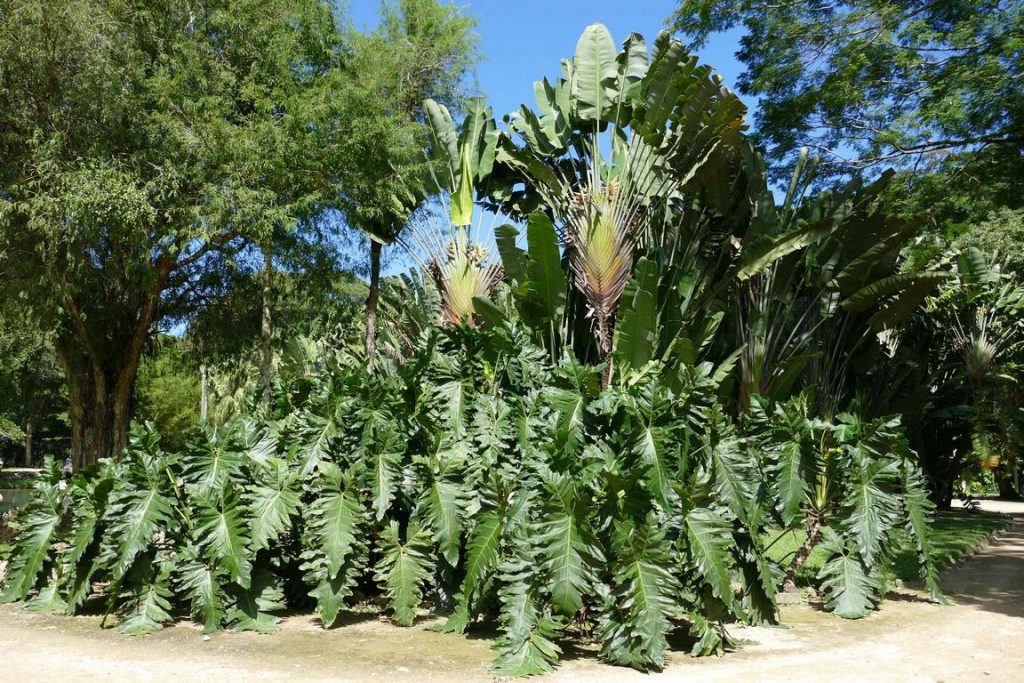
At the foot of a travellers' tree, an imposing Philodendron undulatum (Araceae family) spreads a cascade of beautiful dark green leaves. These are covered by a thick, waterproof cuticle and contain a drainage channel in the centre, allowing water to run off along the tapering tips. Found in the jungles and forests of South America, this plant can grow up to 5 m high.
Victoria amazonica
Romantic as can be, a small lake is the focal point of this garden, where lovers and newlyweds come to immortalise their feelings. Majestic Victoria water lilies amazonica (Nympheaceae) spread out over the surface. They float thanks to strong reticulated veins. The reddish underside of the leaf is studded with spines, and adult leaves easily reach 2 m in diameter and can support up to 45 kg. Named Victoria regia named in 1838 by the botanist John Lindley in honour of Queen Victoria of England, this giant water lily was discovered in 1801 by Thaddeus Haenke, a Bohemian-born naturalist who took part in several expeditions to Amazonia. But for the Indians, the water lily has a different origin: according to a legend of the Tupi-Guarani people, a young girl who had fallen in love with the star of the night wanted to touch Jaci - the moon. Seeing her reflection on the surface of a pond, the young woman threw herself into the dark waters, thinking she could reach her, and sank into the water. Moved by her plight, Jaci decided to transform her into a majestic water star. And so the world's largest water lily was born. The first specimens to flower at the Botanic Garden were grown from seeds brought from Mato Grosso by the botanist Frederico Carlos Hoehne, around 1910.
Taxodium distichum and Cycas circinalis
On the other side of this small lake, you can see some intriguing stalagmites emerging from the ground. These are the roots of a tree, the bald cypress (Taxodium distichum).
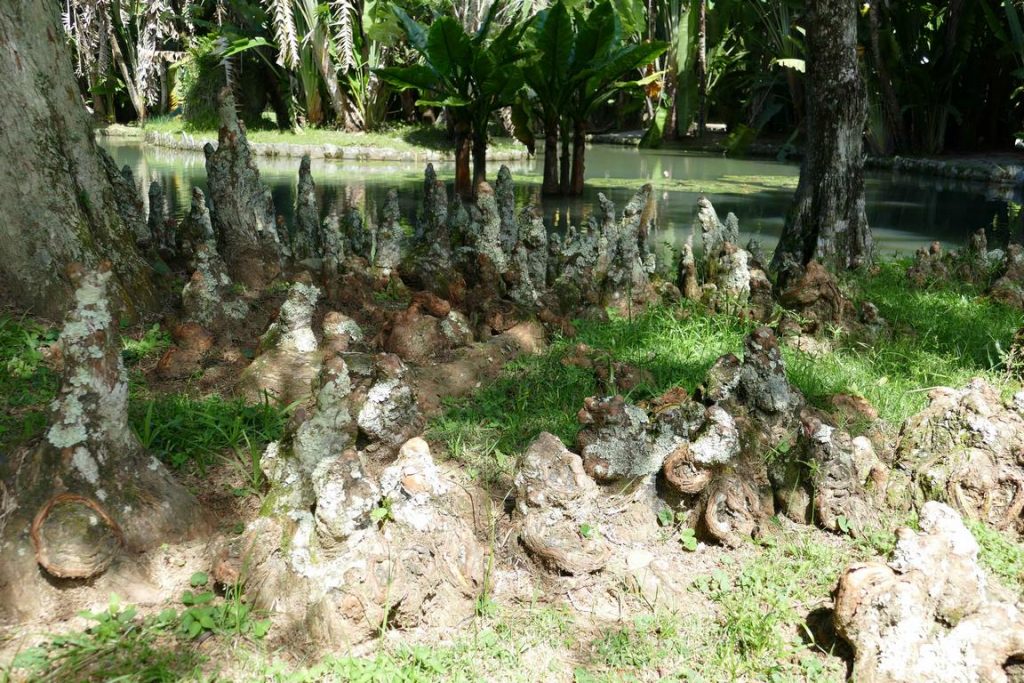
These are pneumatophores, aerial roots in the shape of blistered cones that can reach up to 1.50 m in height when this tree lives in its natural environment. Common in the marshes of Louisiana, it loves wetlands and, as its name suggests, it is not a member of the cypress family, but of the Taxodiaceae family, like the redwood. It also has the particularity of losing its leaves in winter, hence its nickname of "bald". Its wood is highly prized in joinery for its resistance to rotting.
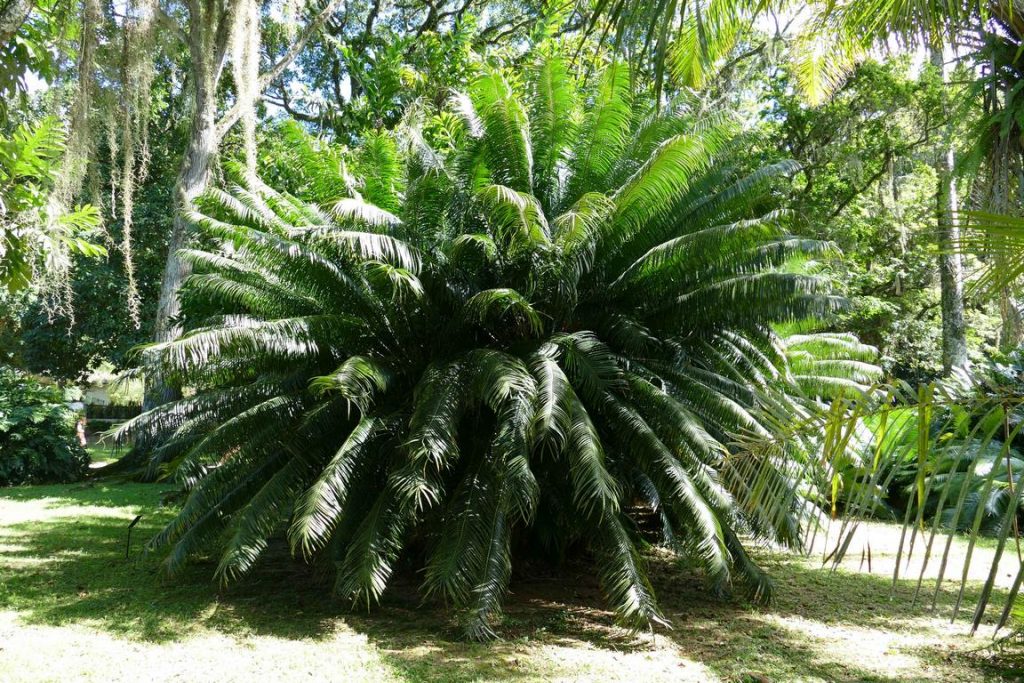
Couroupita guianensis
Last but not least, don't miss the Couroupita guianensis a sacred tree in Amazonia. Its species name refers to its place of origin.
It produces superb, fragrant orange, yellow and pink flowers in clusters that last only one day. They are born on the trunk or at the base of the branches and are pollinated by large bats. This tree is one of the most astonishing on the planet. The trunks of mature specimens can be covered with fruit and flowers at the same time.
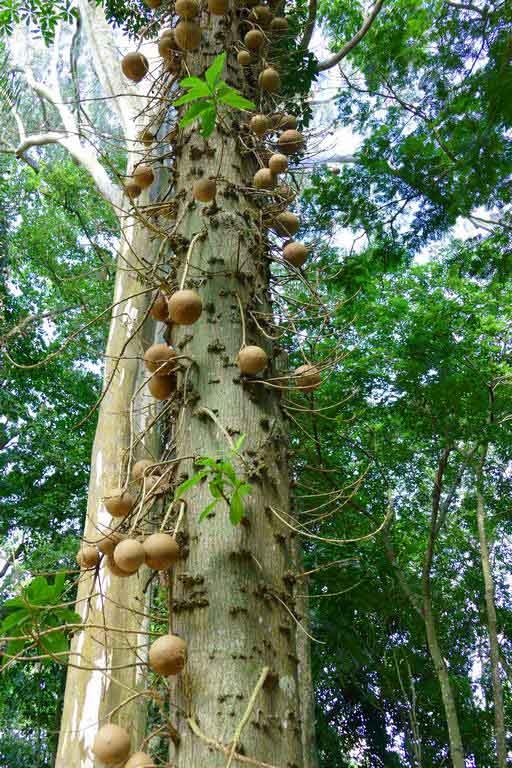
Text and Photos: Brigitte Postel

